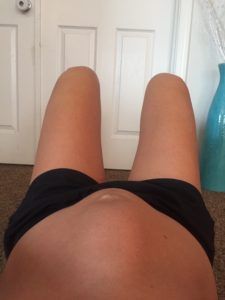All bodies have some separation due to the fact that the recti tummies are gotten in touch with this connective cells. Exactly how wide this diastasis determines if you require to customize your exercise routine for diastasis recti. One of one of the most common types of diastasis in the body is diastasis recti, which is the splitting up of the rectus abdominis muscular tissues-- abdominal muscular tissues that compose your core.
Can I lift weights with Diastasis Recti?
Avoid any barbell movements or lifts that cause a bulge or “coning” in your abdomen. If you notice this, too much pressure is being applied inappropriately and you likely have more healing to do before returning to that movement.
Your doctor is the best individual to be able to examine whether you have diastasis throughout your postpartum exam and the severity of the splitting up. Although there are numerous websites committed to "self-checks," it can be hard to assess on your own.
Are sit ups bad for Diastasis Recti?
In fact, sit-ups can actually make the bulge worse, and incorrect form while doing sit-ups can even cause diastasis recti. If your client has diastasis recti you want her to avoid doing anything that puts strain on the middle of the abdominals, where the muscles have separated.

Just How To Evaluate For Diastasis Recti.
Can Diastasis Recti be fixed with exercise?
Try Exercise First
Experts agree that exercise can help improve diastasis recti. Focus on movements that pull the abdominals in, like abdominal compressions, pelvic tilts, toe taps, heel slides, and single-leg stretches.

- Diastasis recti is an extending or thinning of the linea alba which is the fascial link between the stomach muscles.
- It does not define your maternity, your postpartum state, or your healing as well http://lorenzotkbg004.bearsfanteamshop.com/diastasis-recti as fitness level.
- Wait 6 to eight weeks to begin running as well as take it gradually, investing a couple of weeks on one range each time.
- It's an unbiased searching for that I use as a standard to the how do you diagnose diastasis recti following steps in your program.
As with the typical bench press placement, it isn't feasible to use our diaphragm for breathing or maintain IAP. Conventional bench press strategy has us curving the back with our shoulders pulled back. In this position, the diaphragm and pelvic floor are not identical to each other and it's difficult to preserve IAP. It additionally places a lot of stress on the abdominal wall. Self approval and also a little poise is the initial step.
Can you plank with Diastasis Recti?
In the case of doing planks for Diastasis, it IS a good rule for the masses to “NOT do a plank” because most people will do it poorly, reinforce poor core mechanics, and actually aggravate their condition. But this same outcome occurs in both pregnant and non-pregnant populations.
One simple method to inform if you have a mild to severe instance of diastasis recti is if a sizable "pooch" starts to form on your stomach. This pooch is referred to as "tricking" (likewise called "doming").
Try Our Diastasis Recti Program Free Today!
How do you prevent abdominal separation?
Strengthening your core muscles before you get pregnant or in the early stages of pregnancy might help prevent abdominal separation. It's best to avoid putting excess strain on your abdominal muscles while pregnant. Avoid sit-ups or planks. Try to avoid constipation and if you have a cough, get it treated.
In the future, the womb may protrude via the stomach muscles-- though you most likely won't notice anything is off till after you give birth. Just how to avoid, diagnose and treat a common condition called diastasis recti, a splitting up of the abdominal muscles that can occur while pregnant and also after childbirth. One of my biggest worries during my last 2 pregnancies was establishing Diastasis Recti or "DA.". For those of you who have no clue what that is, it's the medical condition in which your 2 abdominal muscles divided apart during pregnancy as a result of an excess quantity of stress what is diastasis on the abdominal wall. This leaves a "pooch" in your tummy after birth that is extremely hard to fix without some degree of surgical intervention, though it can be taken care of with treatment if your case is moderate enough.